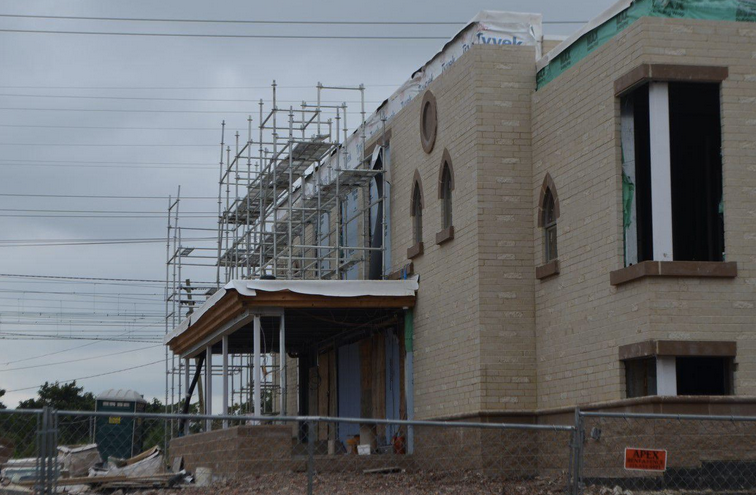We demand place in building trades
Roughly 6.9 percent of construction companies in Philadelphia are minority-owned, according to data from the U.S. Census.

The Ahmadiyya Movement in Islam, Philadelphia Chapter, mosque while it was under construction in North Philadelphia. (Samaria Baliey/The Philadelphia Tribune)
Roughly 6.9 percent of construction companies in Philadelphia are minority-owned, according to data from the U.S. Census.
Meanwhile, other cities — bigger cities, smaller cities, cities that have majority white populations — somehow manage to have greater percentages of minority-owned construction companies.
We, in Philadelphia, should be ashamed.
We have known for decades that the building trade unions’ failure to include African Americans has been a problem.
In 1967, President Richard Nixon’s administration drafted the Philadelphia Plan to racially integrate the building trade unions. The plan established mandatory goals for nonwhite hiring on federal construction contracts and focused on the city.
Little changed.
In 1972, a group of white construction workers assaulted John Dent outside a union building. Police saw the attack and did nothing. The case is still open in federal court.
Little changed.
In 2008, Mayor Michael Nutter formed an “advisory commission on construction industry diversity” to examine the problem and offer solutions. It recommended that city officials work with the unions to collect demographic data about trade workers, set minority membership goals and establish apprenticeship programs until the minority membership goals are met. It suggested that schools provide appropriate training programs to prepare young people to go into the building trades. The commission recommended that the city set its own goals for inclusion and monitor minority participation in the building trades across the city. It also recommended that the city establish an ongoing commission to help the city in its endeavors to integrate the building trades.
Little has changed.
We still don’t know how many black and brown workers are in the trade unions. We still don’t know if the unions have set membership goals and met them. We have tried to get that information, but the unions won’t disclose it.
Only a few high schools in Philadelphia prepare students for the building trades.
We know the city sets goals for inclusion for its own building projects, but we also know it doesn’t always meet them.
Bruce Crawley, who served on Nutter’s commission on the building trades, believes black and brown exclusion from the trades contributes to the city’s persistently high poverty rate.
We can’t help but think he’s right.
In a city where there are more black people than white people, we should see more black people in these good, respectable, often well-paying jobs.
But we don’t. Because white workers have the monopoly on them.
And where does that leave young black and brown people who are entering the workforce?
We know not every teen is interested in going to college. We know not everyone is a good fit for customer service. We know some young people prefer to work with their hands.
We also know that everyone needs a plumber or electrician at some point.
If city and state officials are serious about lifting people out of poverty, they need to take action to integrate the building trades in the city. They need to help young black and brown men and women get these construction jobs that pay more than minimum wage.
They need to follow through on the recommendations of Nutter’s commission on construction diversity.
City and state officials need to demand transparency from the trade unions. They need to make sure the unions and local high schools have appropriate training programs to prepare students for the building trades. City officials need to meet their own goals for inclusion.
They need to do better.
WHYY is your source for fact-based, in-depth journalism and information. As a nonprofit organization, we rely on financial support from readers like you. Please give today.




